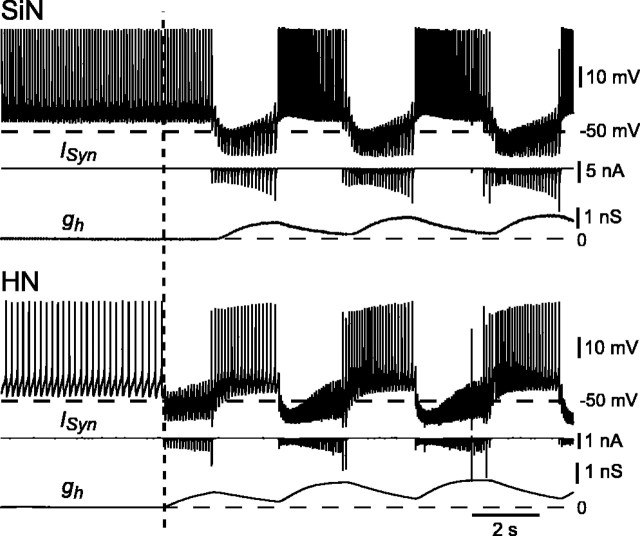Figure 5.
Strong artificial inhibitory synapses cause an immediate transition from tonic firing to rhythmic bursting in a hybrid half-center oscillator. Membrane potential, synaptic current (ISyn), and h-current conductance (gh) are shown for the silicon neuron (SiN) and the heart interneuron (HN). The vertical dashed line indicates the time at which the dynamic clamp was activated to enable the mutual inhibitory synapses. When one of the neurons is inhibited, its Ih activates, driving it back toward the firing threshold. Once it begins to fire, the other neuron is inhibited, its Ih activates, driving it back toward firing threshold so that it inhibits the first neuron, and the cycle repeats.

